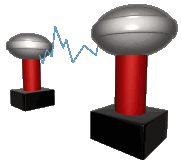|
|
A Sample Project - Page 1
|
Pick
a topic. Each of the 50 project ideas in Part II begins with a detailed
exploratory experiment. Read some or all of these easy experiments to
discover the topic you like best and want to know more about. Regardless
of the topic you choose for the science fair, what you discover from any
of these experiments will make you more knowledgeable about science.
|
More
Heat
PROBLEM Which warms faster, water or soil? Figure 6.1 Sample Experiment Title and Problem |
|
Materials
knife (to be used only by an adult) small
box at least 10 inches (25 cm) square
two 9-ounce (270-ml) paper cups light-colored
soil
tap
water
2
thermometers
ruler
duct tape paper
pencil
timer
desk lamp adult
helper
Figure 6.2 Sample Experiment Materials List |
|
|
not be acceptable
for your project. Because you'll know so much more after doing the sample
experiment and other research, let's wait before deciding on the title
and problem question. MATERIALS As Figure 6.2 shows, all the materials for the sample experiment, like those for all the experiments in this book, can be found around the house or purchased without much money at a local grocery or hardware store. Collect the supplies before you start the experiment. You will have less frustration and more fun if all the materials are ready before you start. |
|
 |
|